Abstract
Inclusion of vagotomy and pyloroplasty in the surgical treatment of gastroesophageal reflux associated with hiatal hernia has long been controversial. To evaluate the morbidity of vagotomy in the treatment of reflux esophagitis, a retrospective study of 311 patients treated by the Hill posterior gastropexy technique of hiatal hernia repair was tabulated. Vagotomy with the anti-reflux operation was performed upon 159 patients (51%). Vagotomy was not included for 152 patients (49%). The incidence of postoperative symptoms with or without vagotomy was almost equally divided--41% without vagotomy and 47% with vagotomy. However, the major postoperative symptoms that occurred in both groups were abdominal cramps and bloating which usually disappeared in the early postoperative period and were attributed to the anti-reflux procedure and not to vagotomy. When vagotomy was included with the anti-reflux operation, the incidence and duration of long term, disabling postoperative symptoms were significantly increased. Diarrhea occurred two times more frequently. Nausea and vomiting occurred ten times more frequently and dumping was present only in vagotomized patients. Long term postoperative symptoms, judged on a basis of symptoms lasting longer than three months duration, occurred in 1% of patients without vagotomy and 26% when vagotomy was included. This study revealed that no additional protection against recurrent symptoms of gastroesophageal reflux or radiographic evidence of recurrent hiatal hernia was provided by inclusion of vagotomy. In conclusion, vagotomy is contraindicated in the treatment of gastroesophageal reflux except in the presence of peptic ulcer disease.
Full text
PDF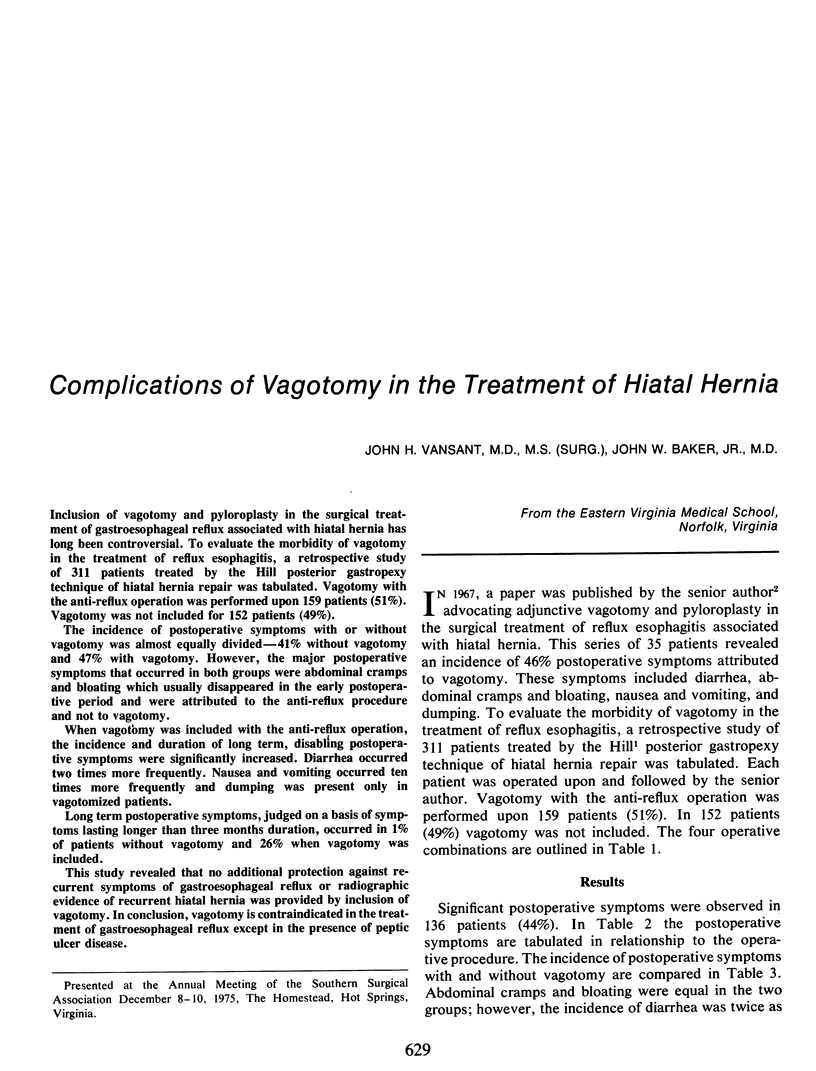
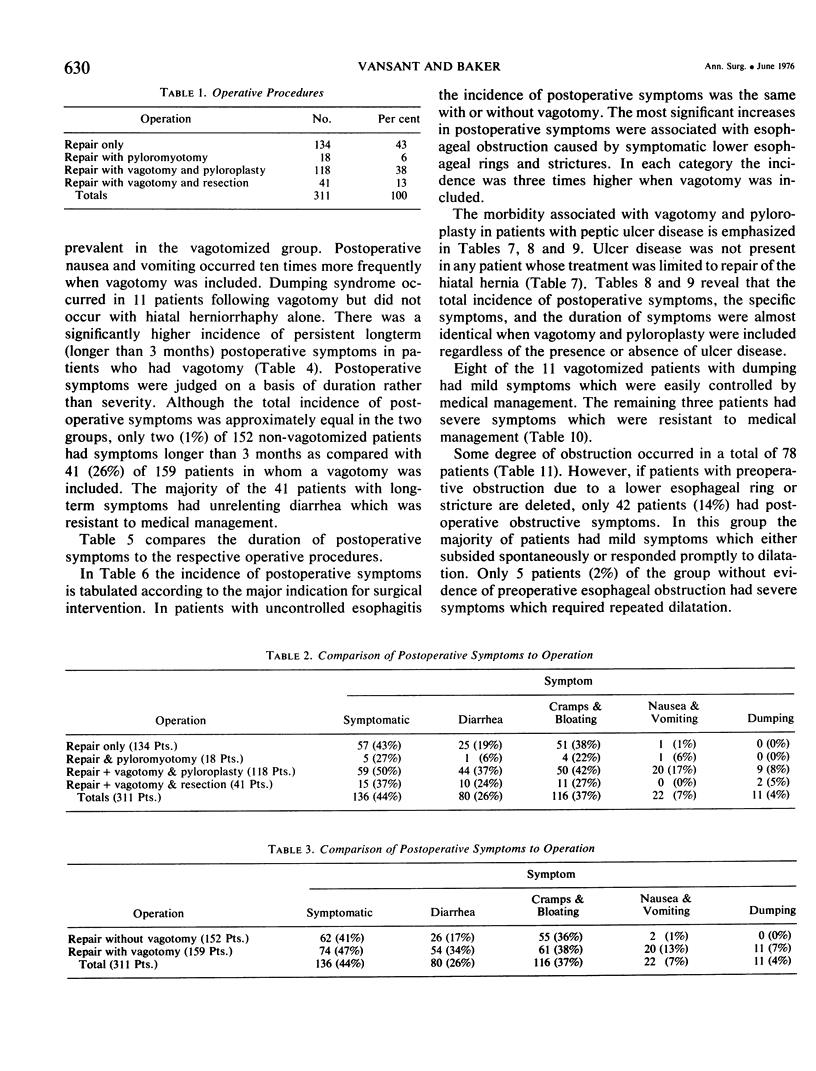
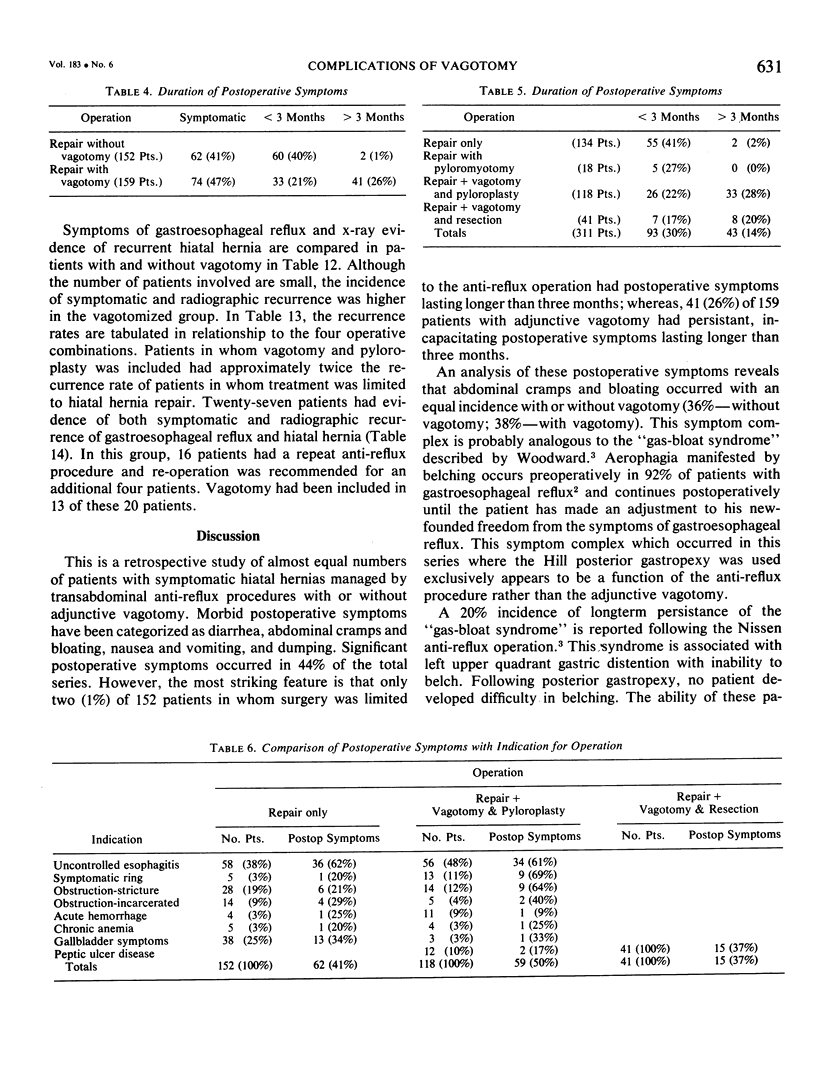
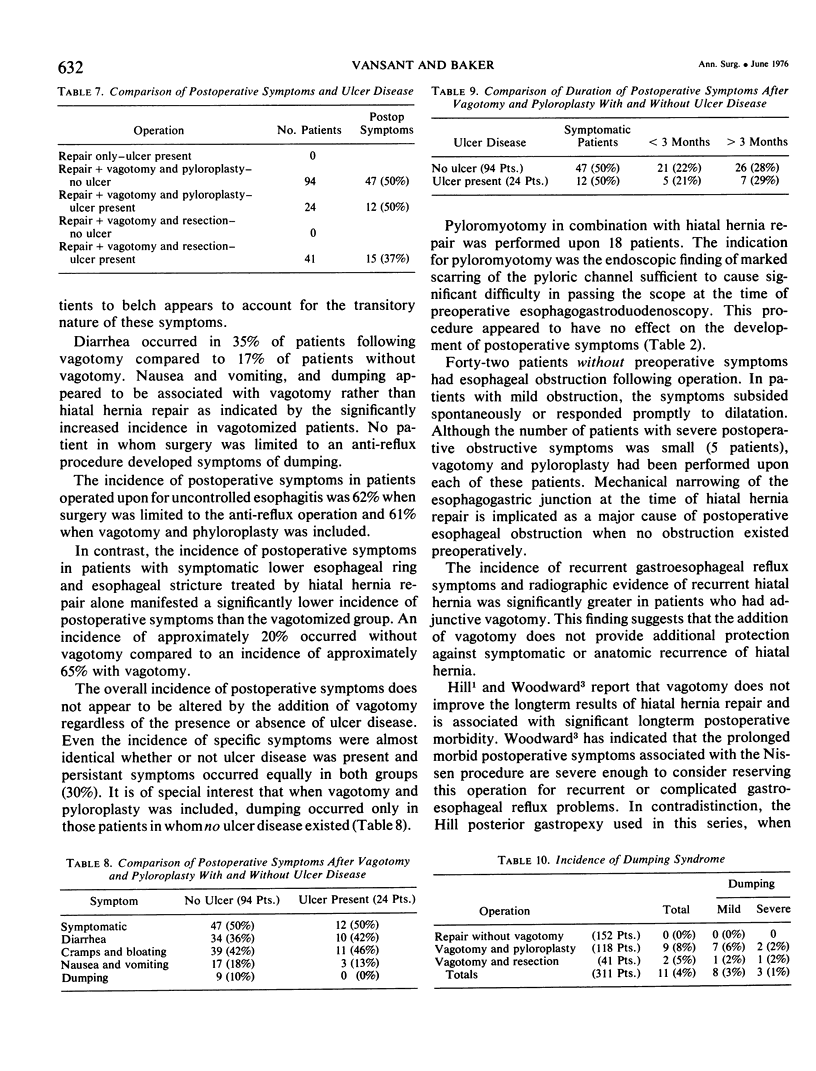
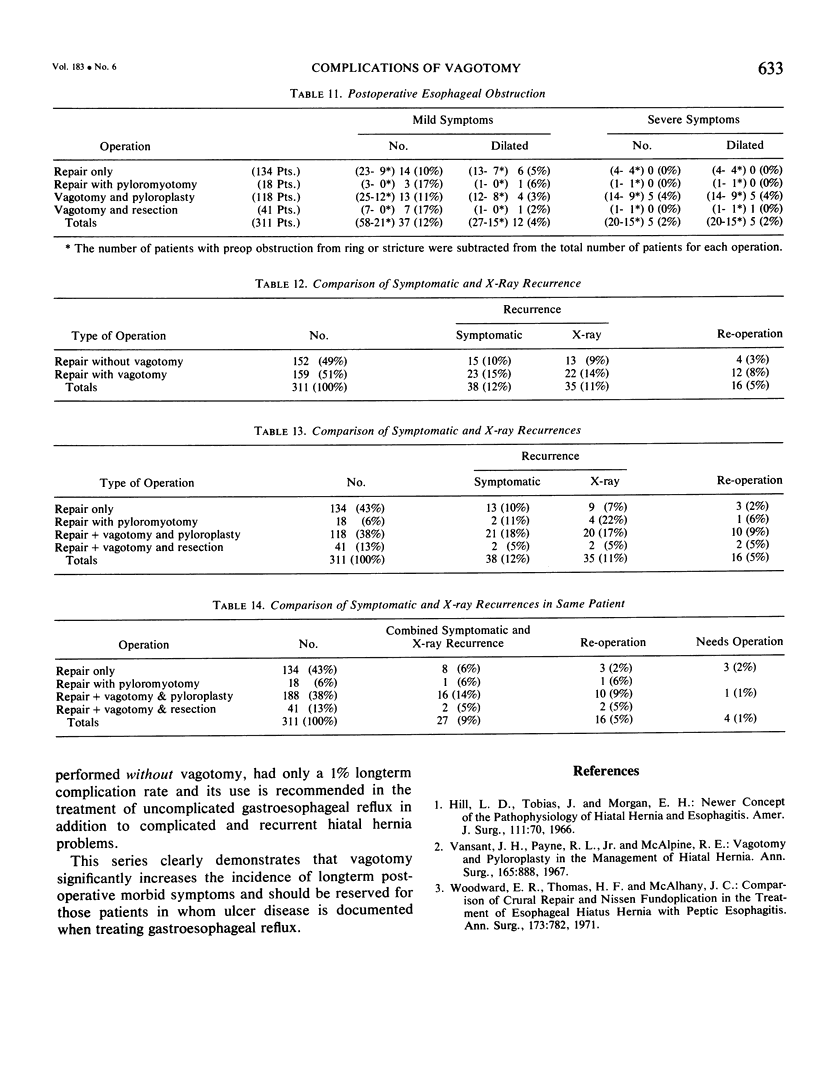
Selected References
These references are in PubMed. This may not be the complete list of references from this article.
- Hill L. D., Tobias J., Morgan E. H. Newer concepts of the pathophysiology of hiatal hernia and esophagitis. Am J Surg. 1966 Jan;111(1):70–79. doi: 10.1016/0002-9610(66)90345-x. [DOI] [PubMed] [Google Scholar]
- Vansant J. H., Payne R. L., Jr, McAlpine R. E. Vagotomy and pyloroplasty in the management of hiatal hernia. Ann Surg. 1967 Jun;165(6):888–893. doi: 10.1097/00000658-196706000-00003. [DOI] [PMC free article] [PubMed] [Google Scholar]
- Woodward E. R., Thomas H. F., McAlhany J. C. Comparison of crural repair and Nissen fundoplication in the treatment of esophageal hiatus hernia with peptic esophagitis. Ann Surg. 1971 May;173(5):782–792. doi: 10.1097/00000658-197105000-00018. [DOI] [PMC free article] [PubMed] [Google Scholar]


